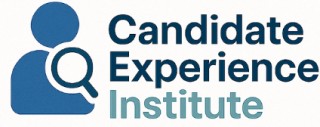
The Role of Leadership Assessments in Recruitment
The Significance of Leadership Assessments in Successful Recruitment
In today's competitive job market, organizations are striving to identify the most effective ways to discover and cultivate leadership potential within their teams. Leadership assessments serve as a crucial tool in recruitment, allowing companies to evaluate a candidate's fit for leadership roles while aligning with organizational values and goals. The use of assessments in recruitment, such as the Hogan Leadership Assessment, provides a comprehensive understanding of an individual's personality traits, motives, values, and potential derailers. This information is vital in predicting a candidate's future performance and their capability to thrive in leadership positions. One of the core elements of these assessments is addressing the full spectrum of personality characteristics, including the bright side, dark side, and values preferences. This holistic approach helps in drawing a more complete picture of a candidate's leadership qualities, driving factors, and how they might behave under stress or pressure. Moreover, the leadership assessments are not merely limited to outlining the candidate's strengths. They also reveal potential areas for development through a detailed report that can be utilized in leadership development programs or coaching sessions. This insight assists not only in recruitment but also in ongoing professional development and succession planning within an organization. Overall, the role of leadership assessments in recruitment extends beyond mere candidate selection; it is about fostering a thriving environment where talent can be nurtured and aligned with the greater organizational mission.What is the Hogan Leadership Assessment?
Unveiling the Hogan Leadership Assessment
The Hogan Leadership Assessment stands as a vital tool within the realm of recruitment and talent management. As organizations seek to harness effective leadership, this assessment offers a comprehensive method to evaluate candidates' leadership potential and suitability for leadership roles. The core aim of this assessment is to delve into the personality traits, values, and potential derailers of candidates, providing a nuanced understanding of their leadership capabilities. This assessment employs a multifaceted approach, incorporating various inventories such as the Hogan Personality Inventory (HPI), which focuses on the "bright side" of personality traits that predict work performance and occupational success. Additionally, the Hogan Development Survey (HDS) examines "dark side" traits or potential derailers—those characteristics that can hinder performance, especially under stress. The integration of the Motives, Values, Preferences Inventory (MVPI) further enriches the assessment by revealing a candidate's core values and motivational drivers, essential for alignment with organizational culture and leadership roles. The output of a Hogan Leadership Assessment is a comprehensive report, detailing insights into a candidate's potential strengths and risks. This report serves as a valuable resource for decision-making within recruitment processes, contributing significantly to leadership development by highlighting areas for coaching and growth. The effectiveness of these assessments lies in their systematic approach to evaluating the inherent traits and behaviors that are indicative of one's leadership potential, ensuring that only the most suitable candidates are considered for pivotal roles. This blend of thorough evaluation and insightful reporting empowers organizations to make informed decisions. By understanding the complex interplay between personality traits and organizational success, businesses can enhance their recruitment strategies and foster a leadership team poised for future challenges. For a deeper understanding of recruitment strategies that complement such assessments, readers can explore insights into comprehensive recruitment strategies.Impact on Candidate Experience
Prioritizing the Candidate Experience
The impact of the Hogan Leadership Assessment on candidate experience is multifaceted and significant. Leadership assessments, like the Hogan, contribute to an enriched experience by offering candidates a glimpse into their potential within an organization. These assessments include personality inventories that highlight personality traits, values, and potential derailers—insightful elements crucial for personal and professional development.
From the candidates' perspective, undergoing such assessments can be an enlightening journey of self-discovery. They provide a detailed report outlining traits from the bright side, dark side, and drivers of personality. This can significantly aid candidates in understanding their leadership potential and how their values preferences align with organizational culture. Consequently, this assessment plays a pivotal role in helping candidates gauge their fit within the company.
Moreover, the Hogan Leadership Assessment emphasizes transparency and effective communication between organizations and potential talent. Ensuring the experience is positive requires organizations to deliver feedback that is honest and constructive, aiding candidates in understanding their strengths and areas for development. This approach not only helps in the personal development of the candidates but also enhances their engagement and satisfaction with the recruitment process.
However, the responsibility of enhancing the candidate experience doesn't solely rest on the assessment itself. Ensuring that candidates are well-prepared and understand what to expect is key. Organisations should provide access to coaching or preparatory resources, possibly through certified coaches, to ensure candidates feel supported throughout the process. As they come face to face with their performance strengths and potential derailers, candidates equipped with the right knowledge and resources are more likely to benefit from and appreciate the assessment experience.
Finally, as organizations strive to improve candidate experience, embracing transparency and offering comprehensive feedback are critical components. Providing candidates with a complete personality inventory and insights that explain how their values, motives, and traits align with potential roles within the organization enhances the overall experience. For further insights on crafting effective candidate experience practices, check out this resource
Preparing Candidates for the Hogan Assessment
Helping Candidates to Successfully Navigate the Hogan Assessment Process
Successfully preparing candidates for the Hogan Leadership Assessment involves not only familiarizing them with the process but also empowering them to understand and showcase their unique personality traits effectively. By doing so, organizations and candidates can align their efforts towards a more enriching experience for both parties. Firstly, it is essential to outline to candidates the types of scenarios and questions they may encounter in the Hogan assessment. This includes understanding the broad spectrum of personality traits, from personal values preferences to potential derailers and development opportunities. It's beneficial for candidates to have an idea of how their responses might translate into the report, focusing on both the bright side and the potential dark side of their personality traits. Moreover, providing candidates with sample questions or practice assessments can prove invaluable. It not only eases anxiety but also clarifies how their leadership potential is evaluated. Candidates should be encouraged to be authentic, as the assessments aim to capture their true leadership traits, personality inventory, and genuine work styles. To further enhance preparation, candidates may benefit from coaching sessions with a certified coach. This guidance can help them comprehend how their responses relate to leadership success within various roles and organizations. Coaches can interpret potential derailers and highlight how these might be addressed or developed for future leadership roles. Additionally, it’s important to communicate the context and intent behind these assessments to candidates. By explaining that the assessments are not meant to purely scrutinize but to aid in mutual development and understanding, candidates can view these evaluations as a constructive step in their career path. Ultimately, preparing candidates involves transparency and clear communication about what the Hogan assessments entail, what they measure, and how they fit into their broader leadership development journey. Ensuring candidates are ready not only improves their performance and comfort but also enhances the overall candidate experience, aligning with the values and culture of the hiring organization.Feedback and Transparency in Assessments
Enhancing Feedback and Building Transparency
In the realm of leadership assessments, particularly the Hogan Leadership Assessment, providing feedback to candidates stands as a crucial element for fostering a positive candidate experience. In fact, transparent and constructive feedback can transform the assessment process from a mere evaluation into an insightful journey of self-discovery and growth. The Hogan Leadership Assessment evaluates a range of personality traits, from bright side characteristics to potential derailers, and even dark side personality traits that can influence leadership potential. These insights are compiled into comprehensive reports that can guide leaders towards recognizing not just their strengths but also areas for improvement. For organizations and certified coaches leveraging Hogan assessments, it's essential to prioritize a transparent feedback mechanism. This means creating opportunities for open dialogue with candidates about their assessment results. Discussing the nuances of their personality inventory, values preferences, and leadership potential can empower candidates to align their development paths effectively. Here’s how feedback and transparency can elevate the candidate experience:- Clear Communication: Ensure candidates understand the purpose and components of the Hogan Leadership Assessment. Clear communication about what to expect before, during, and after the assessment can alleviate anxieties and encourage candidates to engage constructively.
- Personalized Feedback Sessions: Conduct individualized feedback sessions where candidates can explore their Hogan report. Highlight both their bright side traits and potential derailers, offering a balanced view of their leadership style.
- Development Pathways: Utilize the insights from the Hogan Development Survey and values inventory to craft personalized development plans. These should focus on building leadership capabilities and addressing any areas where performance might be impacted by underlying traits.
- Encourage Self-reflection: Guide candidates to reflect on how their personal attributes align with organizational values and the demands of their roles. This self-awareness is pivotal for personal and professional growth.
- Support Growth with Coaching: For enhanced development, pair assessments with coaching sessions. A certified coach can assist in decoding the personality traits and derailers uncovered during the assessment, helping transform theoretical data into actionable leadership strategies.
Future Trends in Leadership Assessments
Emerging Trends in Leadership Evaluations
The landscape of leadership assessments is continuously evolving, driven by technological advancements and changing organizational needs. As we look to the future, several trends are poised to shape how assessments like the Hogan Leadership Assessment are utilized in recruitment and development processes.
Integration of AI and Machine Learning
Artificial intelligence and machine learning are increasingly being integrated into assessments to enhance accuracy and efficiency. These technologies can analyze vast amounts of data to identify patterns and predict leadership potential more effectively. By leveraging AI, organizations can gain deeper insights into personality traits, values, and potential derailers, providing a more comprehensive view of a candidate's leadership capabilities.
Focus on Diversity and Inclusion
As organizations strive to build more diverse and inclusive workplaces, leadership assessments are being adapted to minimize biases and promote equity. This involves refining assessment tools to ensure they are culturally sensitive and inclusive of diverse personality traits and leadership styles. By doing so, organizations can better identify and nurture talent from a wide range of backgrounds.
Emphasis on Continuous Development
Leadership development is no longer a one-time event but a continuous journey. Assessments are increasingly being used not just for selection but also for ongoing development and coaching. Tools like the Hogan Development Survey and the Motives, Values, Preferences Inventory (MVPI) help leaders understand their bright side and dark side traits, enabling them to work on potential derailers and enhance their performance over time.
Real-Time Feedback and Adaptability
In today's fast-paced work environment, real-time feedback is crucial for effective leadership development. Future assessments will likely incorporate real-time data collection and feedback mechanisms, allowing leaders to adapt quickly to changing circumstances and improve their leadership skills continuously. This adaptability is key to maintaining high performance and achieving success in dynamic organizational settings.
As these trends unfold, the role of certified coaches and leadership development programs will become even more critical. By staying abreast of these changes, organizations can ensure they are effectively identifying and nurturing the leaders of tomorrow.













